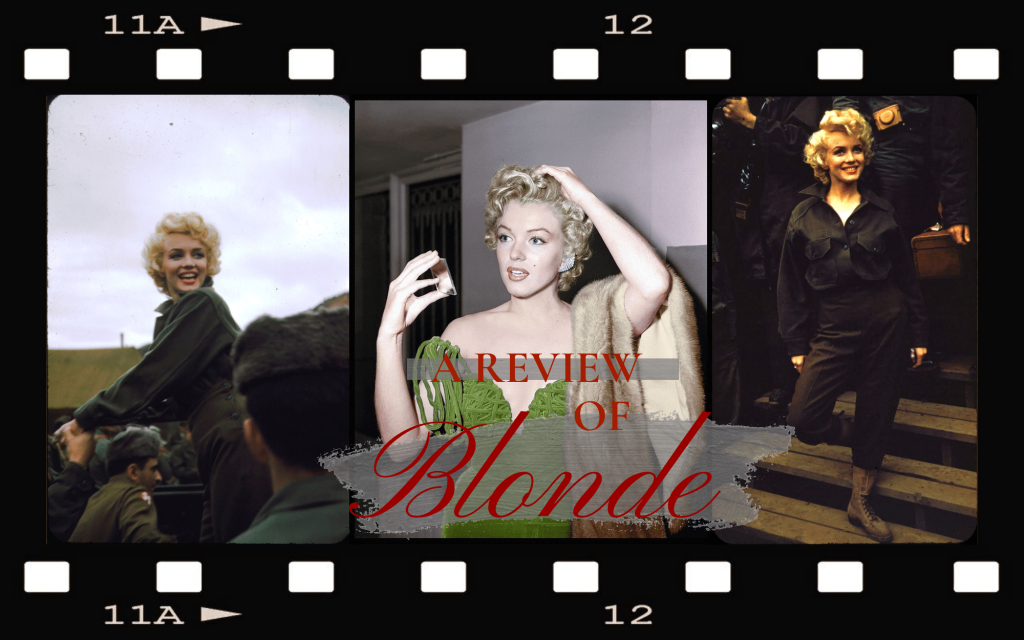Blonde is a fictional biopic of the iconic American actress, Marilyn Monroe. Ana de Armas plays the lead, navigating the glamorous highs and tragic lows of the starling’s life. Despite passing away in 1962, Monroe is still no stranger to the Hollywood spotlight. The star and her story have been depicted in several movies and TV shows, with director Andrew Dominik’s version being the latest in the lineup. However, first-time viewers new to Monroe must be warned that Dominik’s portrayal is heavily fictionalized—a source of controversy in the discourse around the film.
Monroe’s undeniable significance in American culture, with her iconic movie roles and alluring looks, makes romanticizing her life neither an unsurprising nor difficult choice for the director of a biopic. However, Dominik forces viewers down a much darker path. He does not shy away from inserting childhood abuse, dysfunctional marriages, mental illness, sleazy Hollywood practices, and a variety of other uncomfortable topics into the outline of Monroe’s life. In particular, the film places a heavy focus on abortion and sexual assault. Viewers can’t help but squirm in discomfort as de Armas plays a woman who tries but ultimately fails to separate her real self, Norma Jeane, from the movie star persona, Marilyn Monroe. In a particularly haunting scene, she looks with vacant eyes at a picture of herself on a magazine cover and sighs, “She is pretty—but she isn’t me, I guess.”
The movie’s design is a combination of color and grayscale akin to the old Hollywood screens of Monroe’s films, with de Armas a masterful actor in the physical sense—but the plot is a different story. Many say Blonde exploits Monroe’s traumatic experiences while distastefully placing a male lens (Dominik’s) on a woman’s story. An article from The Cut titled “Let the Woman Rest” asserts: “Monroe is no longer a person but a void that members of the public can fill with their own vague desires. She has been transformed into a shorthand for the impossible feminine ideal… And as such, she has become the perfect marketing tool.” To this, I strongly agree. One part of Blonde many of us manage to agree on is that Monroe’s near-perfect looks and demeanor on screen were not representative of her real life experiences. Nevertheless, we must analyze Dominik’s misplaced motives behind certain aspects of the film. When she was alive, Monroe could not speak out, partly because she was a woman in the grasps of the Hollywood industry in the 60’s. Today, she is still unable to defend herself because she is dead. Monroe could never stand up for herself with lasting impact, for the world continued and continues to capitalize on her regardless.
On a personal note, if you want to learn something about Marilyn Monroe, this would not be the movie to watch. Blonde is aesthetically pleasing in its best moments, but overall I found it a surface-level depiction. It treads the line of fact versus fiction to the point where it not only dissatisfies the average viewer but might drive them away from wanting to know more about the actress. If anything, it would be better to go the authentic route: watch the movies that star Monroe in the flesh. Additionally, a large portion of the film involved unnecessary depictions of fictional trauma in a needlessly graphic manner. It is unsettling to consider that the continuous production of Monroe biopics is rooted in the same sexist and exploitative mindsets that existed when she was alive.
Riddhima Patllollu
Columnist
Graphic: Riddhima Patllollu

